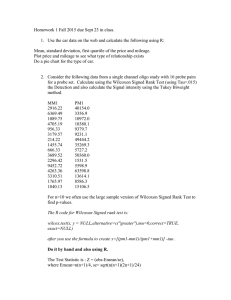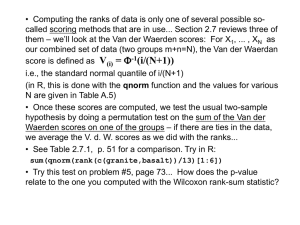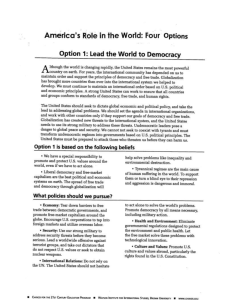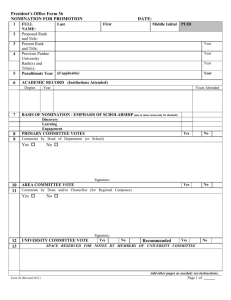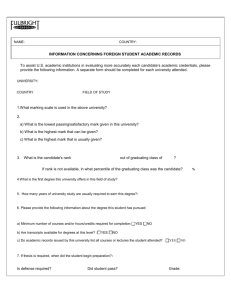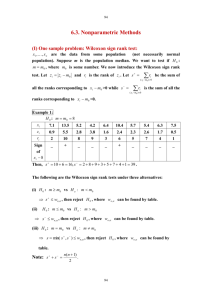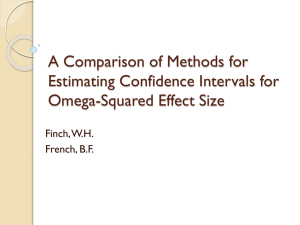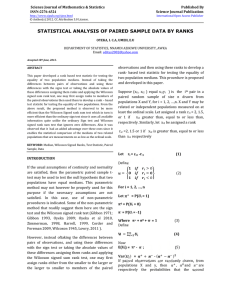One Population Hypothesis Testing
advertisement
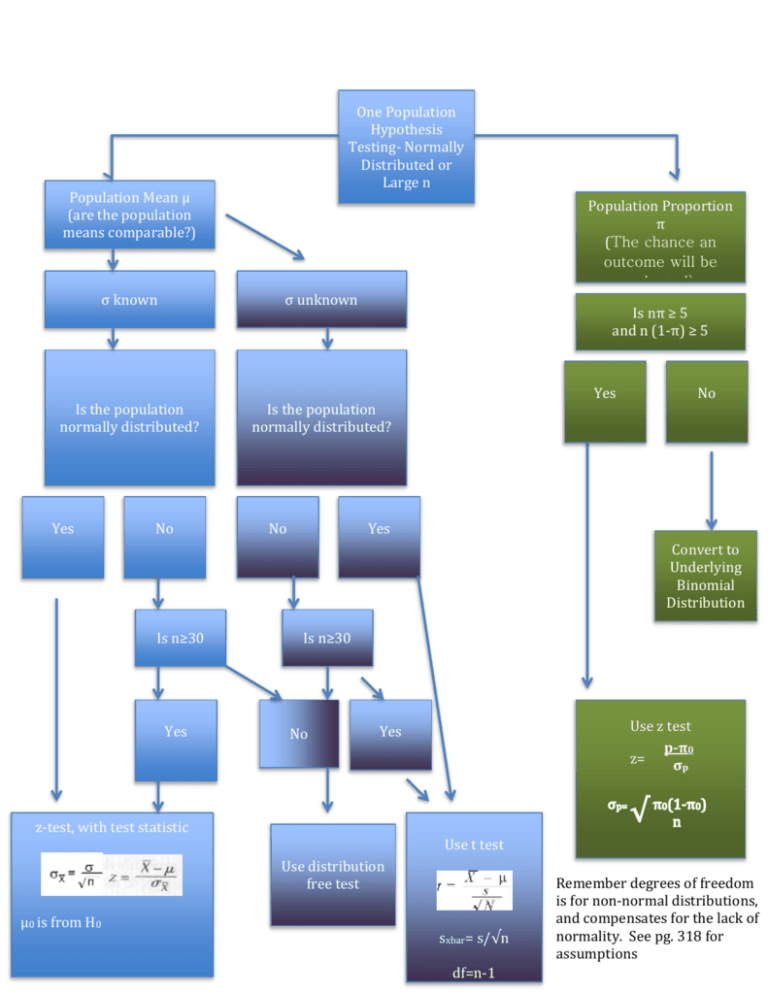
One Population Hypothesis Testing- Normally Distributed or Large n Population Mean μ (are the population means comparable?) Population Proportion π (The chance an outcome will be selected) σ known σ unknown Is the population normally distributed? Is the population normally distributed? Yes No No Is nπ ≥ 5 and n (1-π) ≥ 5 Yes No Yes Convert to Underlying Binomial Distribution Is n≥30 Yes Is n≥30 No Use z test p-π0 z= σp Yes z-test, with test statistic Use t test Use distribution free test μ0 is from H0 sxbar= s/√n df=n-1 Remember degrees of freedom is for non-normal distributions, and compensates for the lack of normality. See pg. 318 for assumptions Hypothesis Testing 1. Formulate the null and alternative hypothesis. 2. Select (or find the given) significance level. 3. Select the test statistic and calculate its value 4. Identify the critical value for the test statistic and state the decision rule 5. Compare the calculated and critical value 6. State the implications. Confidence Interval Hypothesis Testing for Two Sample Means Remember that these are for independent samples. Hypotheis Test μ1-u2 Are the population standard deviations equal? No For any sample size Yes Compute the pooled estimate of the common variance Only if n1 and n2 both ≥ 30 Perform t-test for A z-test approximation can be unequal variances performed where ( )-(μ1-u2) ( )-(μ1-u2) with s21 and s22 as estimates of σ21 = σ22 u1-u2 from H0 and perform the pooled variances t-test ( )-(μ1-u2) Test assumes samples are from normal populations with equal standard deviations. Section 11.4 See Note 3 u1-u2 from H0 See Note 11.3 And note 2 u1-u2 from H0 See section 11.2 Chi Squared Decision Tree 11.7 summary here! Test Decision Tree One Mean To compare one mean to an expected value Two Independent Means To compare two means to see if they are meeting a similar standard Procedure 1. Create H0 a. (e.g. m=m0) 2. Calculate di for each data point 3. Rank according to | di| 4. Sort ranks according to data being R+/R5. Sum R+ 6. Compare test statistic for H0 to critical value One a. W (table Sample should be provided OR b. Z-test Wilcoxon signed rank approximatio test, one nsample See pg. 510 One Proportion Goodness of Fit ANOVA To compare the observed chance of something happening to the expected chance ofhappening To determine if two samples are drawn from the same population or the two samples are distributed similarly To compare the means of more than two samples Two Dependent Means Non Parametric Methods Regression To compare the means of two related samples like before/after For data that does not fit the assumptions of normality and sample size (n), here rank is substituted for actual data values. To attempt to see if data points follow a trend and how much of the data that trend can explain Procedure 1. Create H0 (eg Procedure md=0 , where md 1. Create H0 Non Paramteric= the population (m1=m2) Methods median of di= xi2. Designate the yi) smaller of the two samples as 2. Calculate xi-yi Two sample 1 3. Rank |di| and Samples 3. Rank the pooled categorize as R+ data or RSamples are … 4. Sum the ranks 4. Sum R+ from sample 1 5. Compare to W to get ΣR1=W table or use Z5. Compare to Wilcoxon signed rank Wilcoxon rank sum test critical value test, paired samples test Dependent Independent approximation
